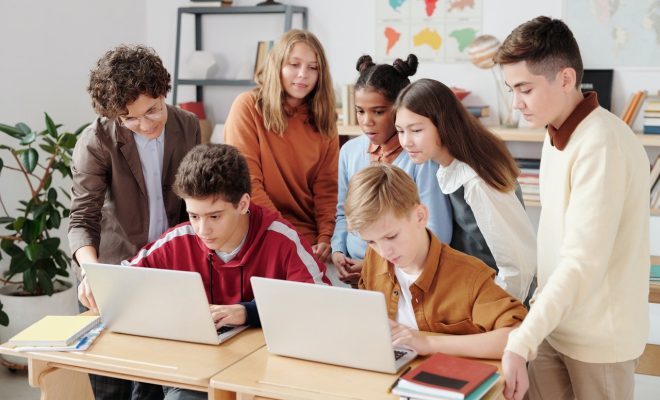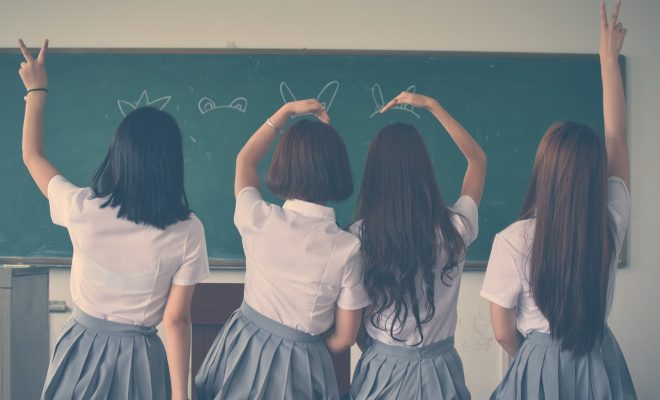6 Ways to Implement a Real Multicultural Education in the Classroom

Most American citizens are proud of our “melting pot” status. After all, how many of us refer to ourselves as one ethnicity or another, and not just an “American”? It is a source of familial pride for us. Even African Americans, who do not always have an Ellis Island story in the family true, find collective strength in the stories of their ancestors and what it means for their lives today.
While this blending of cultures can most definitely be a blessing—it can also be a curse. With more diversity than ever, teachers have to adjust methods from one student to the next, and from one year to the next. Multiculturalism is about more than a classroom with varied skin color – it includes careful examination of the neighborhoods, parenting styles and general experiences that shape each and every K-12 student.
In this article, I want to take a look at several ways to encourage a real multicultural education in our schools.
- Define multiculturalism. Multicultural education is a progressive approach for transforming education based on educational equality and social justice. The components required in educating a multicultural education are content integrations, prejudice reduction, empowering school culture and social culture. These all relate and all require attention as they relate to the efforts of conflict resolution in today’s world. What kids learn in their classroom environments when it comes to interactions with those who are different from them translates into how well they will manage life in the global marketplace.
In the last century, there has been an increase in global mutual acceptance of opposing views and different cultures – though arguably, there is still a long way to go. Specifically when it comes to America, it is crucial that multicultural education exist with the increasing number of students who speak a second language and come from somewhere else. Diversity exists even within mainstream society and students need to have the communication life skills that multicultural education promotes.
- Observe your students closely, and value your real-life experience of diversity over the textbook version. David Kolb created a four-step model for really understanding the needs of a particular student group. He starts with concrete experience, adds reflective observation and then moves to abstract conceptualization and active experimentation.
In other words, multicultural education cannot be taught in a textbook. It must be developed by each educator based on a particular student group.
- Learn your students’ learning styles. Teachers can help students discover their academic strengths by helping them discover their own learning style. In this way, students discover what method of comprehension works best for them based on their own backgrounds and personalities. If educators make this learning style quest a class project, an inherent lesson in multiculturalism is taught.
- Encourage your students to be proud of their heritage. Educators should look for ways to emphasize the differences between students in a positive light. This might mean writing essays on family background or partnering with other students to help each other develop projects that accent the culture of the other. This can include prompts that look back on family history for generations, or could ask students to look at their current family setup.
- Be aware of your biases. In order to fully understand the significance of multiculturalism in the classroom, educators must first thoroughly examine their own cultural beliefs, values, and biases. Then prospective educators are ready to begin learning about other cultures–to become familiar with their values, traditions, communication styles, learning preferences, contributions to society, and relationship patterns of their future students. While some of this education can be achieved by simply reading about cultural diversity, it is difficult to truly substitute for genuine interaction and discourse with members of students’ cultures.
While book knowledge about diverse cultural groups can come in handy to a certain extent when designing lesson plans and educational materials, one of the most important reasons for truly learning about the cognitive patterns of cultural groups is so that the interpersonal attitudes and behaviors of diverse students can be effectively interpreted in terms of the culture that they’re entrenched in. Traditional teaching environments force students from those and other groups to modify their thought and behavior patterns to fit standard European-American norms or else face academic and behavioral consequences. In a culturally responsive classroom, the onus is instead placed on the instructor to learn about and adapt to the cultural intricacies of the students that they teach.
- Create assignments that celebrate multiculturalism. If used cleverly, classroom assignments can provide a primary window into a student’s cultural beliefs. Writing assignments can play a significant role in gathering information about student thought patterns and tendencies. Interviews with family members, assignments asking students to write about learning experiences that occur outside of school, and assignments involving family stories and traditions all can play a significant role in unearthing information about a students’ cultural heritage. Students’ parents can often be solicited as sources of useful personal information and visiting the neighborhoods where diverse students live can help give educators an idea about the level of social support present and the types of challenges that the student might face outside of the classroom.
There are tons of ways that educators can approach multiculturalism in K-12 classrooms but the first step is recognizing its importance.
How do you adjust to and promote multiculturalism in your classrooms?






